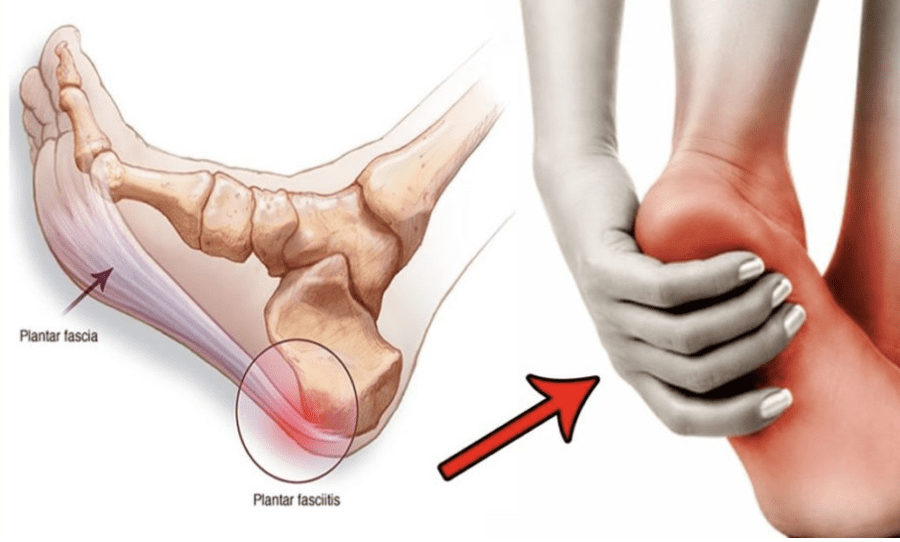Plantar Fasciitis

Plantar fascia is a thick band of tissue present across the bottom of the foot and connects heel to the toes. It is one of the important stabilizers of the foot and carries as much as 14% of the total load of the foot.
Plantar fasciitis is degenerative condition involving this fascia and is the most common cause of heel pain.
Signs/Symptoms
- Stabbing type of pain in the bottom of the heel area, specifically at the area where the fascia attaches the calcaneal bone
- Pain is worst with first few steps after awakening
- Aggravation of pain on standing, climbing or standing on tiptoe
- Aggravation of pain even after long periods of rest
- Increase in pain gradually over months
- Increase in thickness of the Plantar fascia in ultrasound examination
Risk Factors
- Sudden change in the schedule or intensity of any sports activity like running
- Excessive training putting increased stress on the fascia and causing inflammation
- Deformities of foot arches like Flat foot or High arched foot
- Chronic ankle instability
- Use of high heels
- Foot length discrepancies
- Obesity
JEEVISHA protocol for management of Plantar fascitis
- Foot posture correction: As this condition mostly occurs due to undue stress on the Palntar fascia, Foot posture analysis and correction becomes of paramount importance. At JEEVISHA, we have various modalities to measure the degree of foot deformities and also facilities like Individualised In-sole preparations.
- Medications: In the initial course of the management of this condition, patients may be prescribed some Anti-inflammatory medications. Some other medications may be prescribed depending on the condition of the patient, which is individualized from patient to patient basis.
- Physiotherapy: Physiotherapy plays a very important role in fighting this painful condition. Simple measures like use of soft soles in shoes and Plantar fascia massage early in the morning brings great relief to the patients. With a team of dedicated physiotherapist, patient is further evaluated and accordingly a plan is prepared for first reducing pain with different modalities and then slowly rehabilitating ankle for normal functioning.
Targeted treatment
- Ultrasound guided injection around the fascia
- Ultrasound guided Dextrose prolotherapy
- Ultrasound guided Platelet rich plasma Prolotherapy